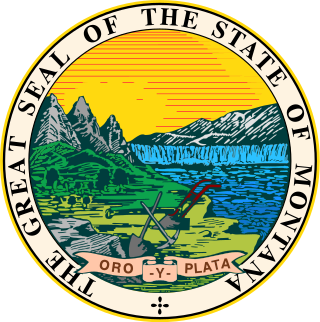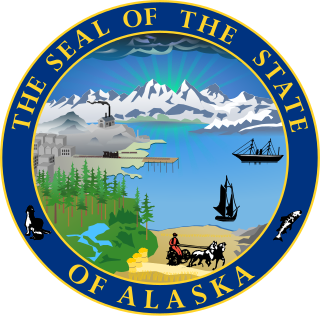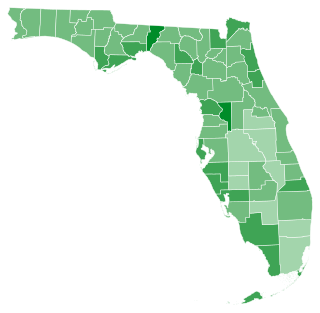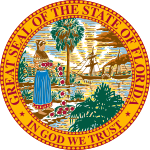
In the politics of the United States, elections are held for government officials at the federal, state, and local levels. At the federal level, the nation's head of state, the president, is elected indirectly by the people of each state, through an Electoral College. Today, these electors almost always vote with the popular vote of their state. All members of the federal legislature, the Congress, are directly elected by the people of each state. There are many elected offices at state level, each state having at least an elective governor and legislature. There are also elected offices at the local level, in counties, cities, towns, townships, boroughs, and villages; as well as for special districts and school districts which may transcend county and municipal boundaries.

Elections in California are held to fill various local, state and federal seats. In California, regular elections are held every even year ; however, some seats have terms of office that are longer than two years, so not every seat is on the ballot in every election. Special elections may be held to fill vacancies at other points in time. Recall elections can also be held. Additionally, statewide initiatives, legislative referrals and referendums may be on the ballot.

Elections in Florida are held on the first Tuesday after the first Monday of November in even-numbered years, as provided for in Article 6 of the Florida Constitution. For state elections, the Governor of Florida, Lieutenant Governor, and the members of the Florida Cabinet, and members of the Florida Senate are elected every four years; members of the Florida House of Representatives are elected every two years. In national elections, Florida plays an important role as the largest bellwether state, occasionally determining the outcome of elections for U.S. President — as it did in 1876 and in 2000.

From 1836 to 1845, the Republic of Texas elected its own presidents. In 1845, it was admitted to the United States as the state of Texas, and has been a participant in every presidential election since, except for 1864 and 1868. Texas did not participate in these due to its secession from the United States to join the Confederate States of America on February 1, 1861, and its status as an unreconstructed state in 1868 following the American Civil War.

The 2020 United States elections were held on Tuesday, November 3, 2020. The Democratic Party's nominee, former vice president Joe Biden, defeated incumbent Republican president Donald Trump in the presidential election. Despite losing seats in the House of Representatives, Democrats retained control of the House and gained control of the Senate. As a result, the Democrats obtained a government trifecta, the first time since the elections in 2008 that the party gained unified control of Congress and the presidency. With Trump losing his bid for re-election, he became the first defeated incumbent president to have overseen his party lose the presidency and control of both the House and the Senate since Herbert Hoover in 1932. This was the first time since 1980 that either chamber of Congress flipped partisan control in a presidential year, and the first time Democrats did so since 1948.

Statewide elections in the U.S. state of North Dakota take place every two years. Most executive offices and all legislators are elected to four-year terms, with half the terms expiring on U.S. Presidential election years, and the other half expiring on mid-term election years.

A general election in the state of Montana was held on Tuesday, November 3, 2020, with the primary elections being held on June 2, 2020. Voters will elect one member to United States House of Representatives and all five state constitutional offices, among other elected offices.

Elections were held in the U.S. state of Arizona on November 3, 2020, as part of the 2020 General Election. Arizona voters chose 11 electors to represent them in the Electoral College via a popular vote. Three seats on the Arizona Corporation Commission were up for election, as were all nine of Arizona seats in the United States House of Representatives, and one of its seats in the United States Senate. Primary elections were held in August 2020. Paper ballots for voting by mail were sent to all registered voters in the state.

The 2020 Wisconsin Fall General Election was held in the U.S. state of Wisconsin on November 3, 2020. All of Wisconsin's eight seats in the United States House of Representatives were up for election, as well as sixteen seats in the Wisconsin State Senate and all 99 seats in the Wisconsin State Assembly. Voters also chose ten electors to represent them in the Electoral College, which then participated in selecting the president of the United States. The 2020 Fall Partisan Primary was held on August 11, 2020.

Texas state elections in 2020 were held on Tuesday, November 3, 2020. Its primaries were held on March 3, 2020, with runoffs taking place on July 14.

Alabama state elections in 2020 were held on Tuesday, November 3, 2020. Its primary elections were held on March 3, 2020, with runoffs taking place on July 31.

Tennessee state elections in 2020 were held on Tuesday, November 3, 2020. Primary elections for the United States Senate, United States House of Representatives, Tennessee Senate, and Tennessee House of Representatives, as well as various judicial retention elections, were held on August 6, 2020.

A general election was held in the U.S. state of Pennsylvania on November 3, 2020. The office of the Pennsylvania Secretary of the Commonwealth oversees the election process, including voting and vote counting.

Colorado state elections in 2020 were held on Tuesday, November 3, 2020. The deadline to register and receive a ballot by mail in Colorado was October 26, 2020. Voters may register in person and vote or pick up a ballot at Voter Service Centers October 19 through 7 p.m. November 3, 2020. Colorado exclusively used a vote-by-mail system, although voters may choose to vote in person at Voter Service and Polling Centers (VSPCs).

Virginia state elections in 2020 was held on Tuesday, November 3, 2020. With the exception of its Democratic Party presidential primary election held on March 3, 2020, its primary elections were held on June 23 of that year.

Alaska state elections in 2020 were held on Tuesday, November 3, 2020. Aside from its party-run Democratic presidential primary held on April 10, its primary elections were held on August 18, 2020.

South Dakota state elections in 2020 were held on Tuesday, November 3, 2020. Its primary elections were held on June 2, 2020.

A general election was held in the U.S. state of Nevada on November 3, 2020. To vote by mail, registered Nevada voters must ensure each ballot is postmarked by November 3 and received by November 10, 2020.

2020 Florida Amendment 4, commonly known as the Think Twice Initiative was a proposed amendment to the Constitution of Florida that failed by 52.47% to 47.53% in the 2020 election on November 3, 2020. The amendment would have required new constitutional amendments to be approved by voters twice in order to go into effect.

A general election was held on Tuesday, November 8, 2022, to elect candidates throughout Florida, as part of the 2022 midterm elections. The results of the elections showed strong Republican Party outcomes as nearly every Republican candidate won in a landslide. As a result, Republicans now control every statewide office in the state for the first time since Reconstruction. Political analysts believe the results may be an indication that the state has transitioned from being a swing state into a reliably Republican red state.




















